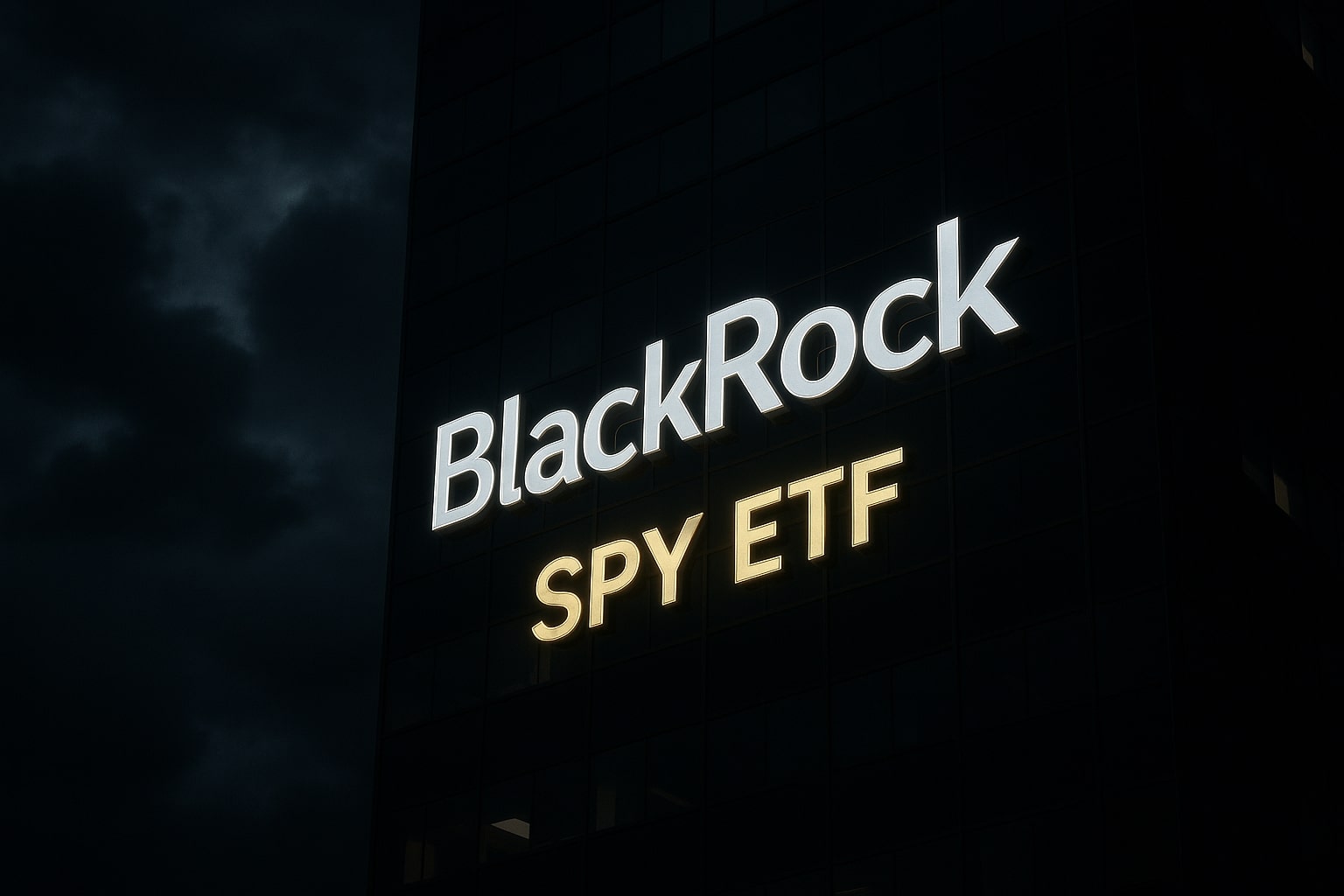
Bitcoin ETF Inflows Hit $240M as BlackRock’s IBIT Tops List and BTC-USD Stabilizes Near $100K
After $1.4B in outflows, Bitcoin ETFs rebound with $240M led by IBIT ($112M) and FBTC ($61M). | That's TradingNEWS
BlackRock’s IBIT ETF Leads $240 Million Bitcoin ETF Rebound as Institutional Flows Return and BTC-USD Tests $100,000 Support
Institutional Reentry: $240 Million Inflows Signal Confidence After Prolonged Outflows
After six consecutive sessions of withdrawals that stripped nearly $1.4 billion from U.S. Bitcoin ETFs, the market staged a sharp reversal on November 7, recording $239.9 million in net inflows — the first positive session since October 28. The shift was led by BlackRock’s iShares Bitcoin Trust (NASDAQ:IBIT), which captured $112.4 million in new investments, restoring its position as the largest daily inflow among all spot Bitcoin ETFs.
The renewed momentum extended across the sector, with Fidelity’s Wise Origin Bitcoin Fund (FBTC) pulling $61.6 million and Ark 21Shares Bitcoin ETF (ARKB) adding $60.4 million. Meanwhile, Grayscale’s GBTC posted a flat session, halting its extended outflow streak that had pressured sentiment since mid-October.
This inflow marks the end of a critical six-day selloff — historically a signal of a local Bitcoin bottom. Data from Farside Investors and SoSoValue confirm that similar multi-day drawdowns in ETF flows have preceded significant short-term reversals in BTC-USD, such as the April correction when Bitcoin recovered 28% within three weeks following an eight-day streak of redemptions.
At the time of inflows, Bitcoin (BTC-USD) hovered near $100,110, having briefly dipped below the $100,000 threshold earlier in the session. The price is down 8.9% on the week and 11% since October 1, underperforming both the Nasdaq (+2%) and gold (+4%) as risk appetite remains constrained by the ongoing U.S. government shutdown.
Shutdown and Liquidity Strain: Macro Pressure Behind ETF Volatility
The U.S. government shutdown, now extending beyond five weeks, has emerged as the key macro constraint affecting Bitcoin’s market dynamics. Limited fiscal operations have delayed federal data releases, constrained Treasury auctions, and reduced dollar liquidity, suppressing overall risk appetite across digital assets and equities alike.
Historically, similar fiscal disruptions have coincided with Bitcoin’s cyclical lows — during the 2018–2019 shutdown, the crypto market bottomed near $3,200 before initiating a six-month rally to $13,800. The current episode, while operating on a much higher valuation scale, mirrors the same sentiment drag: uncertainty in government spending, illiquid bond markets, and high volatility in rate expectations.
Prediction markets on Polymarket assign a 50% probability that the shutdown extends beyond November 16, a scenario that could further weaken short-term liquidity across ETFs. Despite this backdrop, the $240 million rebound in Bitcoin ETF flows suggests that institutional allocators are using macro stress as a re-entry point — particularly those focused on long-term accumulation strategies rather than short-term speculation.
IBIT’s Dominance and Market Structure Reinforcement
BlackRock’s IBIT continues to set the standard for liquidity and transparency within the Bitcoin ETF segment. With $58.33 per share as of November 7 and a market cap of $166.85 billion, IBIT now accounts for more than 46% of total Bitcoin ETF assets. The fund’s average daily volume of 63.9 million shares underscores its institutional adoption, dwarfing competing vehicles.
The ETF’s year range between $42.98 and $71.82 reflects both the volatility in Bitcoin’s price cycle and the growing maturity of ETF-linked price discovery. Despite the recent correction, IBIT’s premium to NAV has stabilized at 0.2%, signaling balanced creation-redemption flows and sustained arbitrage efficiency.
This stabilization contrasts with earlier 2024 episodes, where GBTC discounts widened to over –2.5% during redemptions. Analysts at Wintermute emphasize that ETFs, along with stablecoins and corporate crypto treasuries, now form the “three pillars of digital-asset liquidity.” Their liquidity depth, they note, serves as both a reflection and driver of institutional confidence.
Read More
-
S&P 500 SPY ETF (NYSEARCA:SPY) Holds $667 as AI Spending Surge Counters Weak Labor Momentum
07.11.2025 · TradingNEWS ArchiveStocks
-
Ripple’s XRP ETFs soar — XRPR up 6.41% to $19.27 and XRPI up 7.34% to $13.89
07.11.2025 · TradingNEWS ArchiveCrypto
-
Natural Gas Price Forecast - NG=F Steadies at $4.33 as 110.1 Bcf/day Output and Cold Front Shape Price Outlook
07.11.2025 · TradingNEWS ArchiveCommodities
-
USD/JPY Price Forecast - Dollar to Yen Pulls Back to 152.85 as 153K U.S. Job Cuts
07.11.2025 · TradingNEWS ArchiveForex
Ethereum and Solana ETFs Join the Rebound Wave
The ETF recovery extended beyond Bitcoin. Ethereum ETFs registered $12.5 million in net inflows, led by BlackRock’s ETHA ($8 million) and Fidelity’s FETH ($4.94 million), while Grayscale’s ETHE saw modest outflows of $3.52 million. The total Ethereum ETF assets under management have reached $21.75 billion, equivalent to 5.45% of ETH’s total market cap.
In parallel, Solana ETFs continued their flawless streak with $29 million in fresh inflows, pushing cumulative totals since October 28 to $323 million. The Bitwise Solana ETF (BSOL) and Grayscale Solana Trust (GSOL) both remain net-positive since inception, marking a stark contrast to Bitcoin’s six-day drawdown.
This cross-asset resilience reinforces a broader institutional rotation back into digital assets following October’s risk-off wave, suggesting that capital flight from crypto ETFs was more tactical than structural.
BTC-USD Price Dynamics and On-Chain Metrics
As Bitcoin trades around $100,000, on-chain indicators hint at accumulation near cycle-support levels. CryptoQuant’s MVRV ratio places the fair-value zone between $99,000 and $101,000, consistent with the current trading range. Exchange liquidation data from CoinGlass shows $674 million in forced liquidations over the past 24 hours, including $76.8 million in a single hour, signaling leveraged capitulation.
The crypto fear and greed index now sits at 24 (Extreme Fear), historically a contrarian signal for early accumulation. During prior selloffs — such as March 2023 and June 2024 — similar readings preceded multi-week recoveries exceeding 20–35%.
Still, BTC faces immediate resistance at $103,000–$104,500, where previous ETF-led rallies stalled. Support rests near $98,000, with deeper risk toward $94,800 if ETF inflows fail to sustain momentum.
Institutional Allocation Trends and Survey Insights
A Schwab Asset Management survey underscores the deepening mainstream integration of crypto ETFs: 52% of respondents plan to allocate to ETFs, and 45% express interest specifically in digital-asset-linked products. This aligns with the increasing share of Bitcoin ETF holdings representing 6.73% of BTC’s total market capitalization, totaling $135.4 billion in AUM.
The same trend appears among corporate balance sheets, with Bitcoin ETFs gradually replacing direct spot custody. This structural shift enhances transparency, simplifies compliance, and institutionalizes Bitcoin exposure. Wintermute highlights that corporate treasuries, ETFs, and stablecoins now function as the ecosystem’s “triangular liquidity base,” interdependent in maintaining orderly price formation.
JPMorgan Outlook: Long-Term Target $170,000 Despite Correction
Analysts from JPMorgan maintain a long-term Bitcoin price target of $170,000, citing ETF-driven structural demand and tightening supply post-halving. They estimate that institutional funds now absorb approximately 4,000 BTC per week, nearly matching the new issuance rate of 3,125 BTC per day. This imbalance supports sustained upward pressure once short-term macro headwinds subside.
However, they warn that the current correlation between Bitcoin and traditional risk indices like the Nasdaq remains elevated at 0.81, implying that equity volatility will continue to dictate near-term price direction.
IBIT and ETF Flows as the Institutional Benchmark
IBIT’s trading volume and stability during market stress make it the benchmark for institutional positioning. Despite Bitcoin’s slide from $114,000 to $100,000, inflows into IBIT have resumed faster than those of its peers, reaffirming BlackRock’s dominance in ETF liquidity provision.
Meanwhile, Fidelity’s FBTC has quietly expanded its share to 22% of total AUM, reflecting diversification among traditional fund allocators. ARKB, backed by Ark 21Shares, remains a strategic choice for tech-oriented funds, often used in rotation strategies linked to Nasdaq volatility.
These dynamics indicate that Bitcoin’s institutionalization is maturing — redemptions are shorter, inflows return faster, and ETF arbitrage keeps pricing aligned with spot markets.
Verdict: BUY — ETF Rebound Confirms Institutional Accumulation Phase
After six sessions of outflows, the surge of $240 million into U.S. Bitcoin ETFs, led by IBIT, marks a meaningful shift in sentiment. With total ETF assets representing 6.73% of BTC supply and a stabilizing on-chain structure around $100,000, the correction appears more cyclical than structural.
Macro volatility from the U.S. shutdown remains a drag, but institutional behavior points to accumulation. The ETF ecosystem — IBIT, FBTC, ARKB — continues to act as a liquidity anchor, reflecting long-term confidence even under fiscal uncertainty.
Recommendation: BUY — accumulate between $98,000–$102,000 BTC-USD, targeting $130,000–$140,000 by Q1 2026.

















